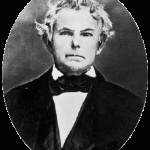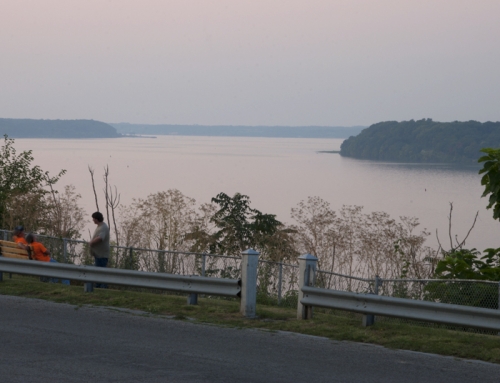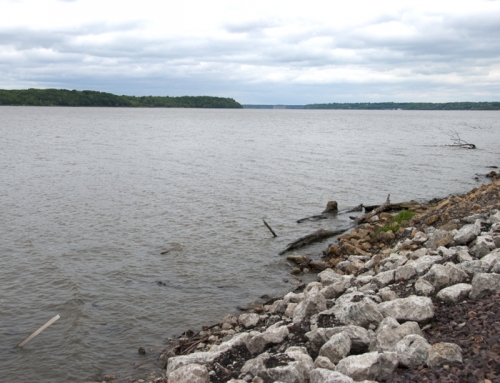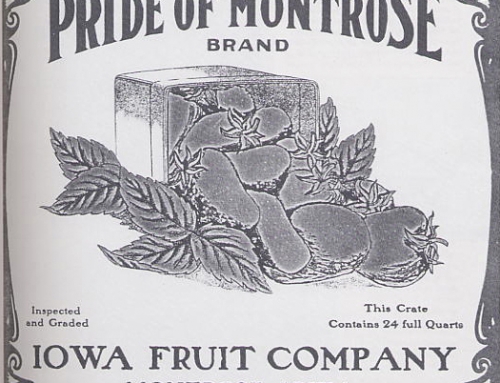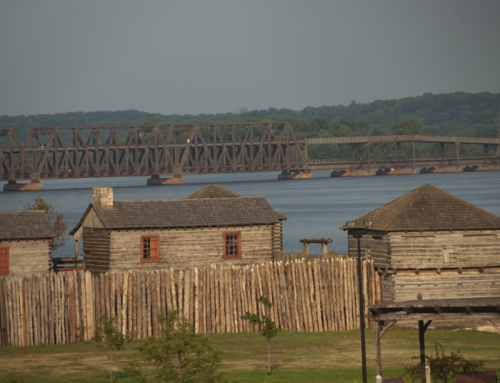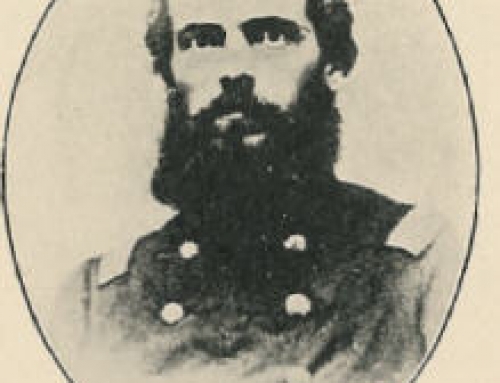History
When Iowa’s first school was established here, the village was called Nashville, laid out in 1841 by Elias Smith. It was later renamed to honor the early pioneer who built that school. “Settler” is a word that didn’t really apply to Dr. Isaac Galland, as he seemed to be constantly on the move (and getting married, something he did four times).
Galland was, in fact, born on the move, near Somerset, Pennsylvania in 1791, when his parents, Matthew and Hannah, were traveling from Virginia to Ohio. When he was 13, Galland enrolled in William and Mary College, where he studied theology. In 1810, Galland and a couple of friends headed to New Mexico in search of gold, but the Spanish authorities viewed their intentions with suspicion and threw them in jail in Santa Fe for a year. After he was released, Galland lived in Ohio and Indiana for a while, then reportedly became involved with outlaws in Illinois, helping them steal a few horses and counterfeit money.
He relocated to Oquawka in 1827 with his third wife (he never officially divorced the second), where he had a trading post. In 1828, he packed up the family pirogue and floated downriver to the place that now bears his name, where he began trading with the Sauk and Meskwaki and practicing medicine. He built Iowa’s first school not long after building his family home. By 1834, Galland had jumped into the land business; he was one of the five trustees in the New York Land Company that tried to monopolize land purchases in the Half Breed Tract (see Burlington). He also bought land across the river in Hancock County, Illinois around the village of Commerce (later Nauvoo), where he lived for a while with his family.
In 1839, Galland sold thousands of acres to the Mormons who were looking for a new home after being forced out of Missouri. During these transactions, he met Joseph Smith, who almost certainly helped convince Galland to join the Mormon faith. It didn’t really take, though, as Galland eventually grew skeptical of Smith’s revelations and Mormonism.
Galland left the church in 1842, moving to Keokuk (he had platted the original town site with David Kilbourne), then to California in search of gold again, before returning to Iowa to live at Fort Madison where he lived out the rest of his life; he died in 1858. In the last few years of his life he is believed to have embraced Spiritualism, a popular religion in the 19th century that taught that consciousness lives beyond physical death and that communication with those who have passed is possible, as long as one has an intermediary to help with the process.
Twenty years after Galland died, the county history included this tribute to Galland:
…such was his native power of intellect and love of education, that, when he died at Fort Madison, in 1858, he was a tolerably good physician, a tolerably good lawyer, was deeply learned in ancient, as well as modern, history, and had few superiors in the West either as a speaker or writer.”
–From History of Lee County; Western Historical Company, 1879
I’ve read a number of contradictory biographies about Galland–he’s either revered or reviled in most stories–so it’s hard to know how much of the above narrative is actually true. He probably invented a few stories to prop up his status as a risk-taking pioneer, while other folks undoubtedly exaggerated the extent of his villainy. He was almost certainly out to make a buck in most everything he did, which may have rubbed some the wrong way, like the Mormons he did business with. It seems likely that he joined the Mormon church to facilitate his business dealings, then parted ways when he saw limited potential for future transactions. In spite of that, he seems to have kept cordial relationships with leaders including Joseph Smith and Brigham Young. Regardless, he led a complex and fascinating life.
As for the village called Galland, it had a little trading post but never attracted many residents. It’s a quiet place today with a handful of houses clustered near the old village site.
Exploring the Area
A replica of the first school built in Iowa, the Galland School, is located just south of the village. Dr. Galland built the 120 square foot, one-room school in 1830 from rough-hewn logs. Berryman Jennings, just 23-years old, taught the first class of 8 students. Jennings didn’t get paid. Galland instead provided room and board in his house, plus access to his medical books; Jennings wanted to be a doctor, too. The school closed just three years after opening, when that group of EuroAmericans moved away. The replica was built in 1940.
**Looking for more places to visit along the Mississippi River? Check out Road Tripping Along the Great River Road, Vol. 1. Click the link above for more. Disclosure: This website may be compensated for linking to other sites or for sales of products we link to.
Community-supported writing
If you like the content at the Mississippi Valley Traveler, please consider showing your support by making a one-time contribution or by subscribing through Patreon. Book sales don’t fully cover my costs, and I don’t have deep corporate pockets bankrolling my work. I’m a freelance writer bringing you stories about life along the Mississippi River. I need your help to keep this going. Every dollar you contribute makes it possible for me to continue sharing stories about America’s Greatest River!
©Dean Klinkenberg, 2014,2019
